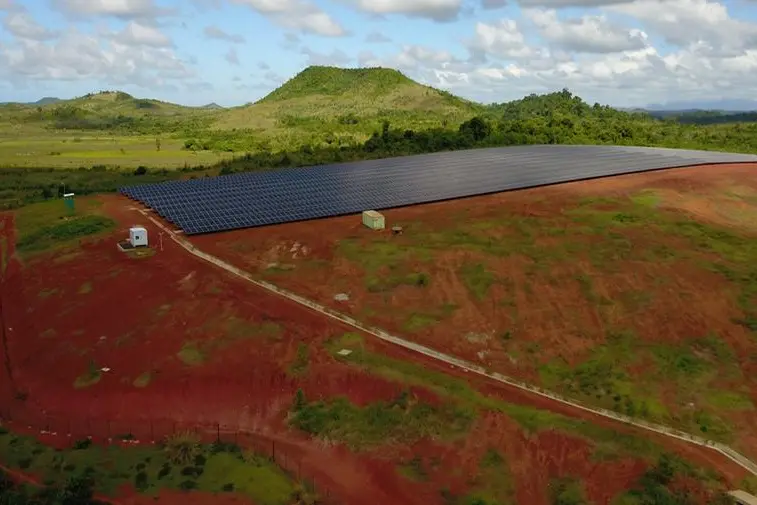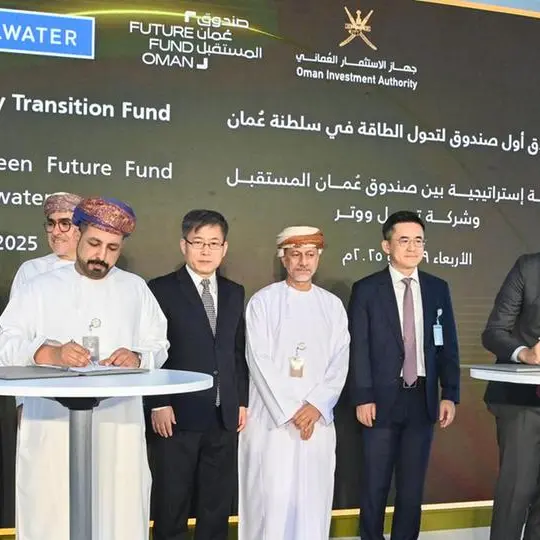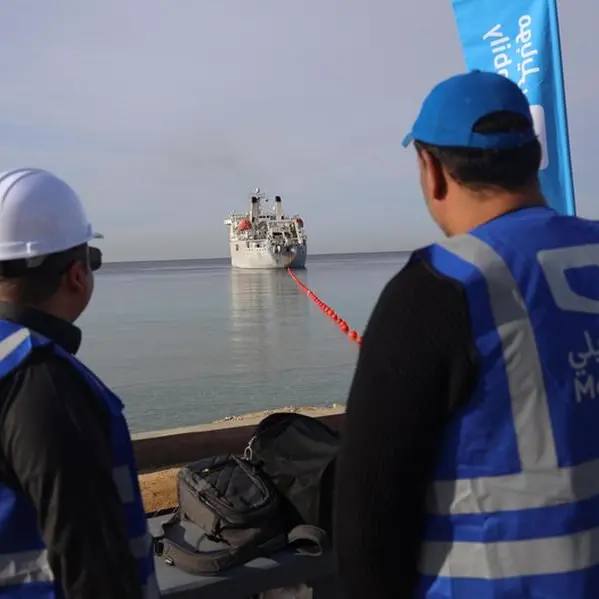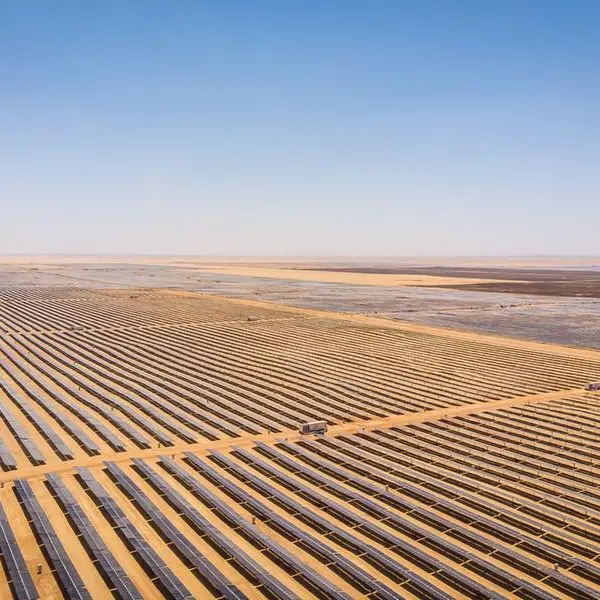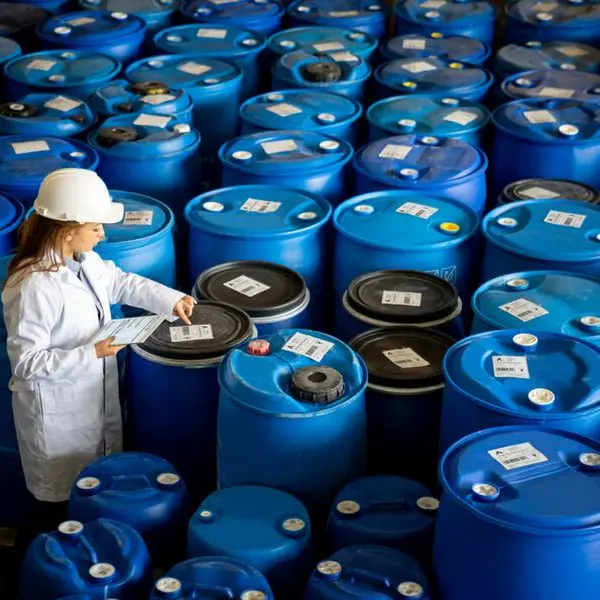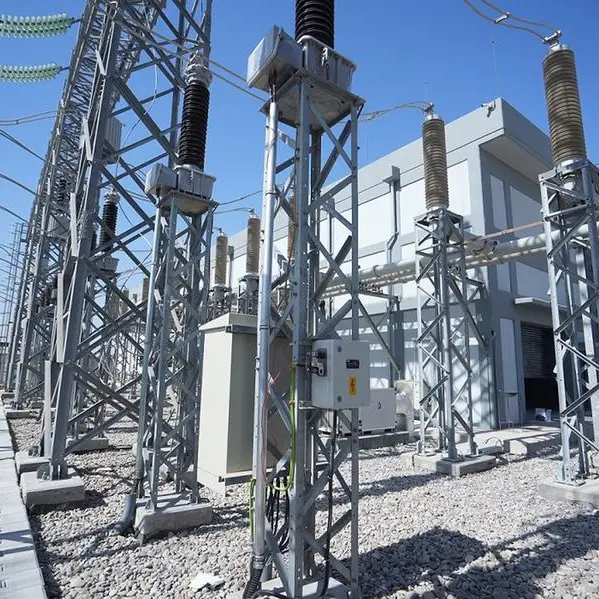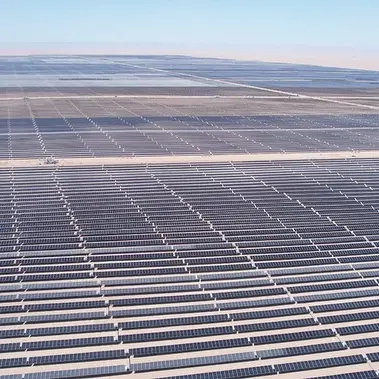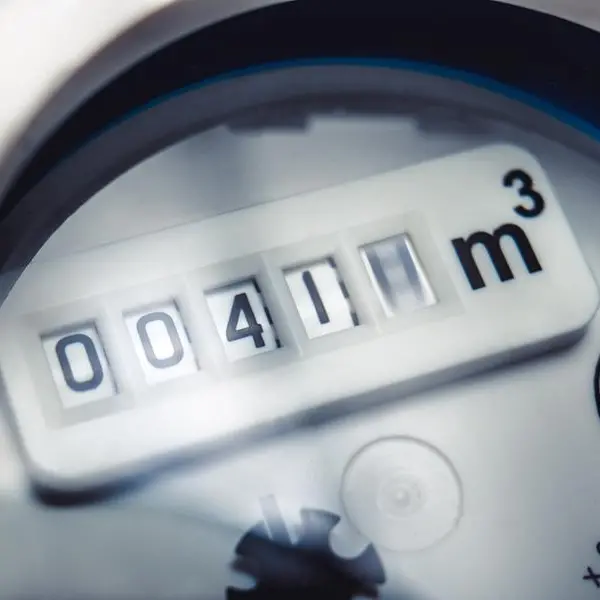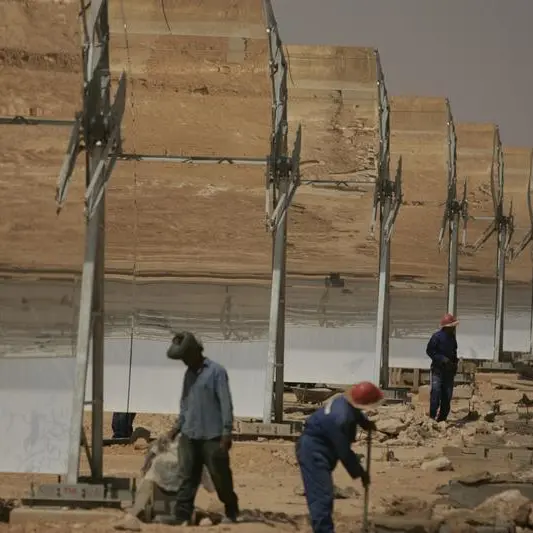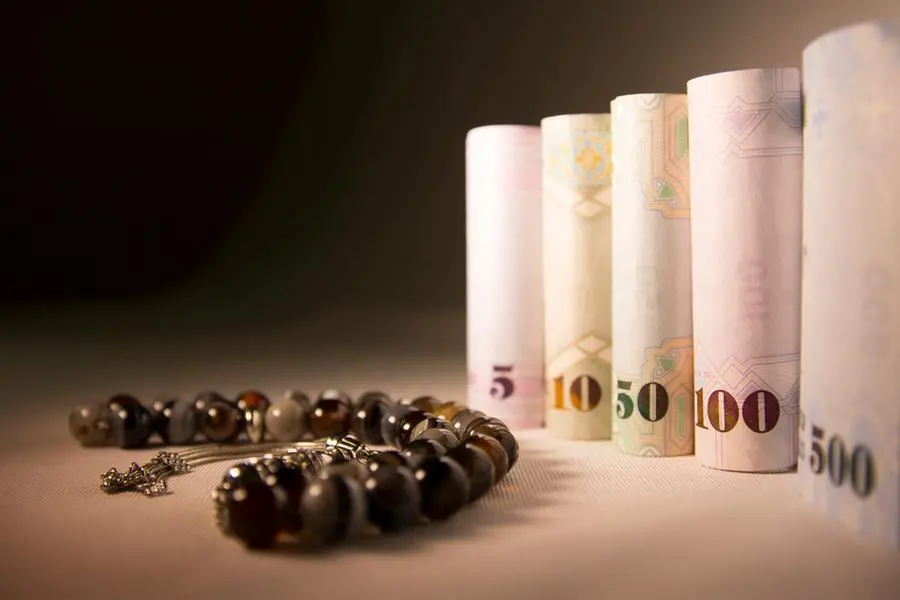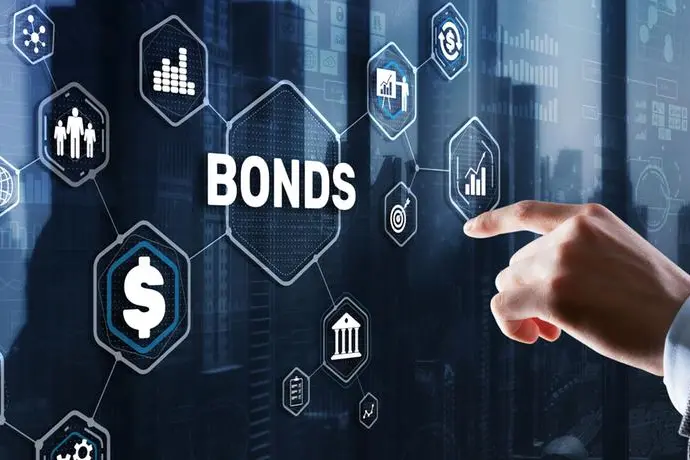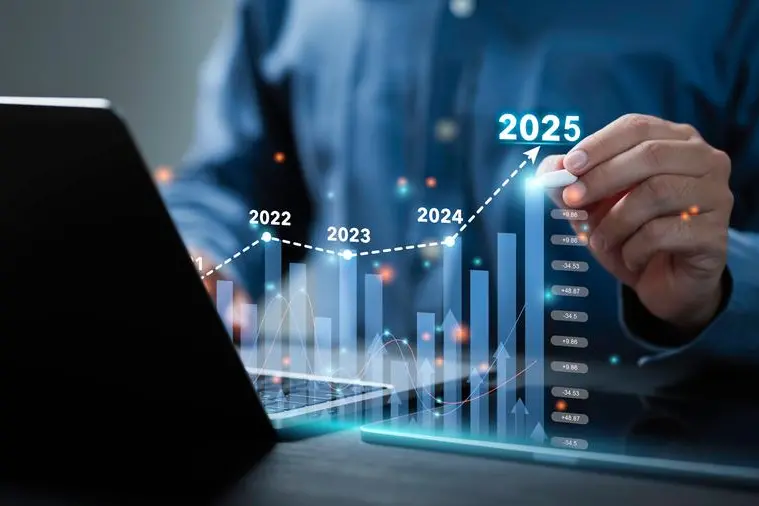PHOTO
Site photo of NEA Sambava solar power plant, one of the three solar power plants operated by Axian Energy unit NEA in the SAVA region of Madagascar. Photo courtesy: X account of Axian Group.
Axian Energy, part of the Pan-African business group Axian, expects to achieve an operational renewable energy portfolio of 500 megawatts (MW) within two years, its CEO said.
The company, headquartered in Madagascar, currently operates nearly 250 MW of renewable energy projects, comprising utility-scale projects in Madagascar, Senegal, Congo-Brazzaville and Burkina Faso, and smaller projects for rural electrification in Mali and Madagascar.
"We have nearly 200 MW under construction in Senegal, Benin, and Mauritius, and within two years, we expect to have 500 MW in operation," Benjamin Memmi told Zawya Projects.
He added that Axian Energy has an advanced pipeline of 700 MW in Mozambique, Madagascar, Ivory Coast, Zambia, and Tanzania.
The company legacy is in the oil and gas business, with over 20 years in oil distribution. Five years ago, it shifted to energy production and renewables, primarily in Madagascar.
"Our ambition expanded to developing projects across Africa two years ago and is aligned with the group's activities in telecom, finance, and real estate," said Memmi.
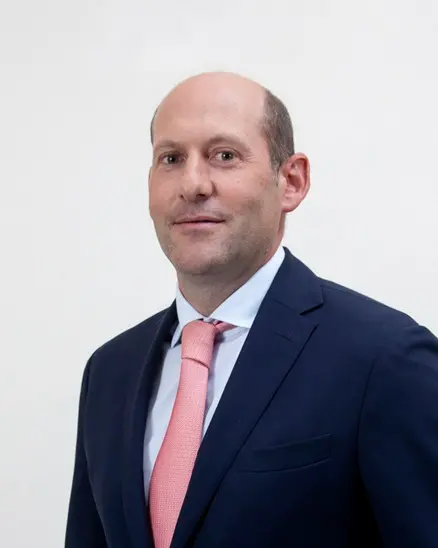

Axian Energy's strategy is to develop projects in countries where parent company has existing operations.
"For example, we are present in telecom in Senegal, Tanzania, and Togo, which gives us a better understanding of these markets and better ways to develop projects," he said.
Moreover, the company steers clear of large-scale utility projects, focusing instead on projects ranging from 25 to 100 MW.
Memmi elaborated: "Major markets like South Africa, Morocco, Egypt, and Tunisia undertake large-scale projects, but many African countries have smaller grids and needs. Large-scale projects have challenging returns. On the other hand, we prioritise countries where we can effectively balance local energy needs, attractive financial returns, and meaningful impact."
The Axian Energy CEO said the growing interest from Middle Eastern funds in renewable projects in Africa is promising, noting that diversifying funding sources beyond traditional Development Finance Institutions (DFIs) like IFC, AfDB, FMO and DEG can provide fresh perspectives and opportunities.
He continued: "As Middle Eastern funds expand their focus, there is potential for them to support portfolios like Axian Energy's, given our significant presence across various countries. This could help address the energy access challenge and accelerate the development of renewable projects across the continent."
When asked to comment on the estimated amount of funding required for future projects, Memmi revealed that the overall size of the investment will be around €1 billion.
"On the equity side, we will need to contribute approximately €250 million, of which we have already invested one-third," he said.
Excerpts from the interview:
Given Africa's size and the vast potential of its renewable resources, how has the renewable energy market evolved in the continent, especially in the markets in which Axian Energy is involved?
African countries are aware of the need to integrate renewables into their energy mix. Hydropower is already significant in some regions with large projects supplying baseload energy. There's been a push for more solar projects recently, but the target of 30-35 per cent solar production in the energy mix hasn't been reached yet. This is because countries are balancing their existing resources, such as gas, with solar.
A few of them are using gas turbines to generate power, so they are waiting for solar prices to match the lower costs of their abundant gas resources. Examples include Mozambique, Gabon, and Senegal, where they carefully consider the cost of solar against their own energy resources. As project developers, we must align the cost of solar with the cost of local resources.
You mentioned the company's operational portfolio is currently at 250MW. Please clarify the mix of these projects.
Today, our energy mix is evenly split between solar and hydro. In the long term, we anticipate a shift to 35 per cent hydro and 65 per cent solar. This choice is driven by the challenging pace of project development in Africa.
Starting from scratch, it takes at least four years to get a solar project operational, while a hydro project can take more than ten years. For instance, we have been developing a 120 MW hydro project in Madagascar for a long time and are now starting the financial closure, which we hope to finalise within a year. Wind energy poses similar challenges to hydro, albeit to a lesser extent, making its development and implementation challenging. Hence, we prefer to concentrate on projects we can implement and actively manage within an acceptable time frame.
Additionally, we engage in Mergers and Acquisitions (M&A) of projects, such as acquiring existing hydro assets. We have one such operation in Zambia [56MW Imola project]. This approach helps us build our portfolio effectively.
[Editor's note: On July 30, 2024, Axian Energy announced that its subsidiary NEA Rwanda completed the acquistion of 49 percent stake in the 8.5MWdc Gigawatt Global Rwanda solar power plant with Fortis Green Renewables owning the remaining 51 percent. The acquisition of shares marks the company's first operation in the Rwandan market.]
Could you provide insights into how Axian Energy built and financed the largest solar farm in the Indian Ocean region in Madagascar?
The Ambatolampy solar farm is significant because it was the first solar project implemented in Madagascar and remains the country's main solar project. The solar farm, located 50 km from Antananarivo, the capital, was completed in two phases: Phase 1 in 2018 with a capacity of 20 MW and Phase 2 in 2021 with 20 MW and 5 MW per hour (MWh) of storage, bringing the total capacity to 40 MW. To put this in perspective, international utilities typically procure solar farms with capacities of around 50MW. Hence, this solar farm's capacity is substantial, covering 80 per cent of the national utility's solar production.
We are particularly proud of overcoming the challenge of securing DFI financing due to Madagascar's economic and utility situation. We pre-financed the entire project using our own funds and partially refinanced it once it was operational. We invested around €40 million for the whole project.
[editor's note: To finance Phase 2, Societe Generale, GuarantCo, part of the Private Infrastructure Development Group (PIDG) and African Guarantee Fund (AGF) provided €10 million credit facility covered by a credit guarantee with a 9-year tenor to a syndicate of local banks. GuarantCo and AGF provided guarantees of €5 million and €2 million respectively. The same team had helped refinance Phase 1 in October 2020 closing a €16.2 million transaction. GuarantCo and AGF provided guarantees of €9.3 million and €3.8 million respectively]
Currently, the solar farm produces nearly 70 gigawatt hours (GWh) per year, which is about 5 percent of the country's total electricity production. Additionally, the Levelised Cost of Energy (LCoE) for this project is half the global average, resulting in significant savings for the utility. The project has also had a substantial local impact by providing electricity to the surrounding communities.
Are there plans to expand the solar farm?
We are planning a third phase, which will include both solar power and storage. Adding storage is necessary because the current transmission line capacity limits the amount of electricity we can inject into the grid. Our goal is to produce and store energy during the day and then inject it during peak hours.
We plan to have an additional 10 MW of solar power and 10 MW of battery storage. This setup will allow us to inject energy for 2 to 3 hours during peak hours at night.
Given the financial and technical constraints of building and operating solar power plants, how did the economics of battery-based energy storage prove viable?
The economics of energy storage vary by country and purpose. For example, in the Madagascar project, the 5 MWh Battery Energy Storage System (BESS) helps mitigate the intermittency during the day. This is a basic service that we have been offering the utility at a competitive price of under €0.10 per kWh [for 20 MW plus 5 MWh storage].
In Senegal, on the other hand, we are building a large project that includes a 60 MW solar PV plant plus a 72 MWh storage system. This storage is not just for intermittency management; it provides a whole grid storage capacity. This means it will support not only the PV plant but the entire grid, storing energy during the day and injecting it to stabilise the grid whenever needed by the utility. This will be the largest storage project in West Africa.
This project is exciting from a regional perspective because Senegal is connected to the West African Power Pool. We believe major utilities leading regional power pools will increasingly adopt large storage capacities to regulate production and distribution more effectively.
Are there emerging opportunities for the private sector to build and operate electricity grids in Africa?
In most of our projects, we handle transmission through evacuation lines to ensure the project is grid-connected once commissioned. However, building and managing national grids is not within Axian Energy's scope. Instead, we collaborate with companies like Gridworks that specialise and invest in grid connections.
As a relatively young, Africa-focused operator of Independent Power Producer (IPP) projects, our current focus is on consolidating the core IPP business rather than on grid or network management.
But you are correct to highlight the importance of transmission and storage. Regional grids across Africa, such as the West African Power Pool, the Southern African Power Pool, and the East African Power Pool, are pushing for increased interconnection.
Local grids also need significant improvement. For example, in Madagascar, the utility's top executive has emphasised that beyond production, substantial investments are required in the national grid to support new renewable projects.
Investing in grid infrastructure is crucial. Currently, grids are generally managed by governments or utilities. There is a need for improved legal frameworks in various countries to enhance competitiveness and encourage private investment in this sector.
Based on Axian Energy's project experiences, could you summarise the key challenges of implementing renewable energy projects on the continent?
Despite a strong desire to increase renewable energy capacity, ample capital, and the willingness of private and public IPPs and utilities, the pace of project implementation remains too slow. Consequently, more and more people across Africa lack access to electricity, with over 650 million still suffering from energy poverty. We must do much better in addressing this issue with improvements in every phase of the project cycle:
1. Development phase: We must plan projects better and identify each country's specific needs to focus directly on projects that make sense and can be supported by utilities through fast-track studies and support.
2. Legal and commercial discussions: We need more standardisation in contracts, as we constantly face the same issues, such as bankability and guarantees. These are essential for securing financing but are often very challenging. Standardisation and support from DFIs in terms of guarantees to countries and utilities can help.
3. Financing phase: To bridge the price gap between renewable energy and energy resources like gas, significantly more competitive financing for renewable projects is essential. Currently, the cost of financing is too high, and the guarantees and CPs to conclude a deal are very demanding. DFIs must work towards providing more competitive financing to the IPPs in order to reduce prices and achieve national targets.
In February 2024, the World Bank Group President had announced in Dubai that they aim to reduce project approval times from an average of 19 months to 12 months by the end of 2024. Based on your experience, how long does it typically take to close a solar project in the markets where you operate?
In our experience, solar projects, from start to commissioning, take around four years on average. This includes:
- Initial phase (12 months): Meet with the utility, identify the project, sign a Memorandum of Understanding (MOU), secure land, and complete feasibility studies.
- Contract negotiation (6-12 months): Discuss and finalise the contract, including financial models and specific clauses, due to the lack of standardisation.
- Financing (6 months): Approach the DFIs to discuss and finalise facility agreements and CPs in the contract.
- Construction (1 year): Complete the construction phase.
To improve efficiency, we need to streamline each phase and reduce delays.
How has Axian addressed the challenge of defaults or payment delays by off-taker customers?
As an IPP with a 25-year contract, for example, we must ensure that the project is financially viable and supported over this period. DFIs typically require two main types of guarantees:
Payment guarantee: This ensures the off-takers' ability to pay for the energy produced, which is achieved through a letter of credit or an escrow account that holds funds for at least six months of invoices.
State guarantees: These are provided by governments to cover risks such as the risk of resilience of contracts, force majeure, and asset nationalisation. These guarantees are crucial for mitigating investment risks related to capital expenditure.
By securing these guarantees, we can ensure the financial stability and resilience of the project throughout its lifespan.
(Reporting by Anoop Menon; Editing by SA Kader)
Subscribe to our Projects' PULSE newsletter that brings you trustworthy news, updates and insights on project activities, developments, and partnerships across sectors in the Middle East and Africa.
